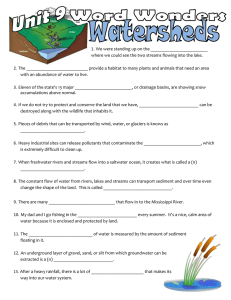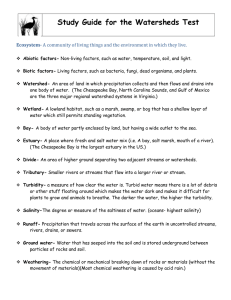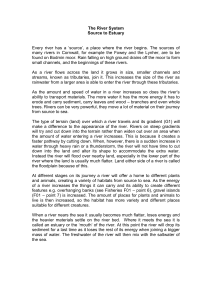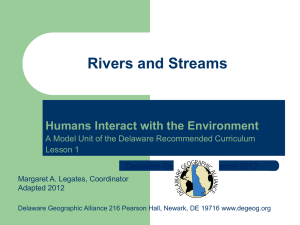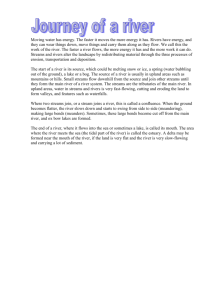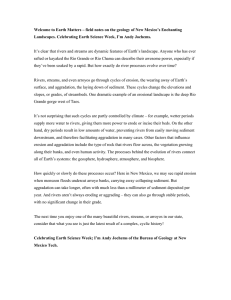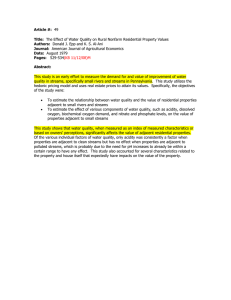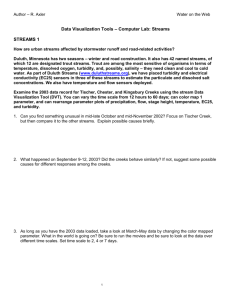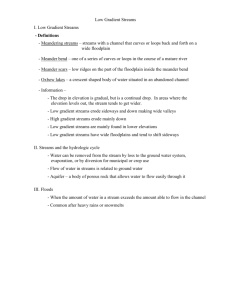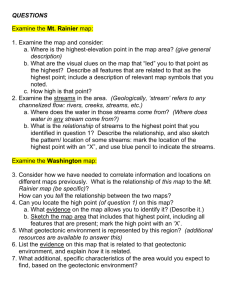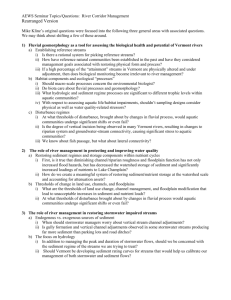Unit 9Word WondersWatersheds divide We were standing up on the
advertisement
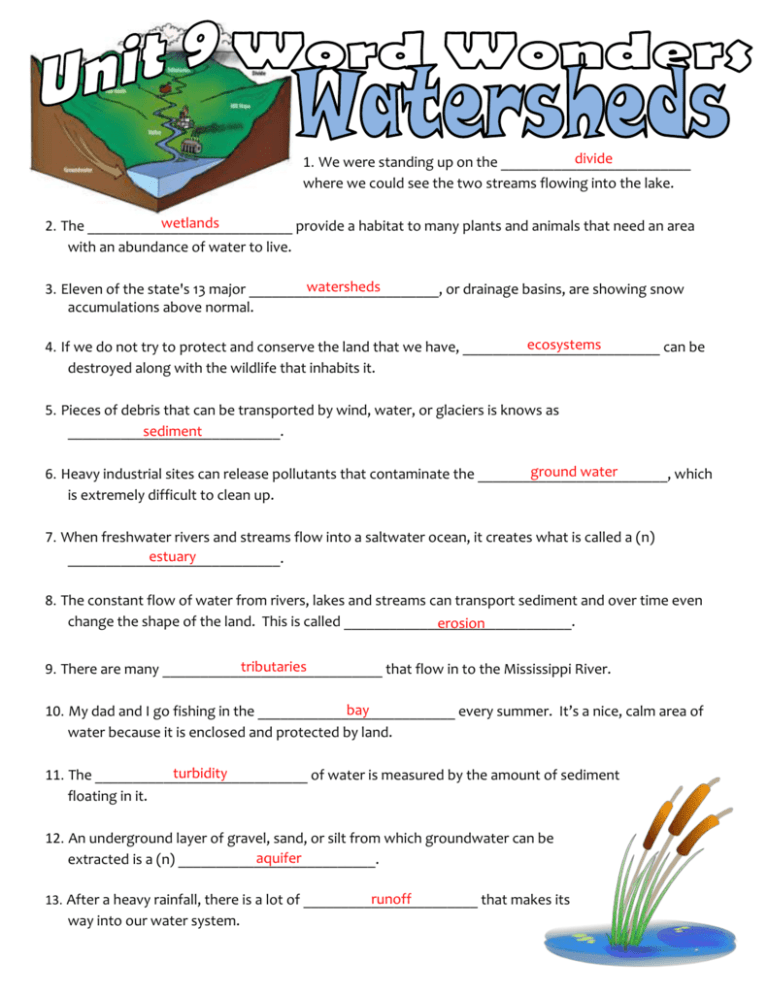
divide 1. We were standing up on the _________________________ where we could see the two streams flowing into the lake. wetlands 2. The ___________________________ provide a habitat to many plants and animals that need an area with an abundance of water to live. watersheds 3. Eleven of the state's 13 major _________________________, or drainage basins, are showing snow accumulations above normal. ecosystems 4. If we do not try to protect and conserve the land that we have, __________________________ can be destroyed along with the wildlife that inhabits it. 5. Pieces of debris that can be transported by wind, water, or glaciers is knows as ____________________________. sediment ground water 6. Heavy industrial sites can release pollutants that contaminate the _________________________, which is extremely difficult to clean up. 7. When freshwater rivers and streams flow into a saltwater ocean, it creates what is called a (n) estuary ____________________________. 8. The constant flow of water from rivers, lakes and streams can transport sediment and over time even change the shape of the land. This is called ______________________________. erosion tributaries 9. There are many _____________________________ that flow in to the Mississippi River. bay 10. My dad and I go fishing in the __________________________ every summer. It’s a nice, calm area of water because it is enclosed and protected by land. turbidity 11. The ____________________________ of water is measured by the amount of sediment floating in it. 12. An underground layer of gravel, sand, or silt from which groundwater can be aquifer extracted is a (n) __________________________. runoff 13. After a heavy rainfall, there is a lot of _______________________ that makes its way into our water system. watershed divide tributaries runoff aquifers ground water estuary bay sediment turbidity erosion ecosystem wetland An area of land in which precipitation collects and then flows and drains into one body of water. Also known as a drainage basin. An area of higher ground separating two adjacent streams or watersheds. Smaller rivers or streams that flow into a larger river or stream. Precipitation that travels across the surface of the Earth in uncontrolled streams, rivers, drains, or sewers. An underground bed or layer of the Earth, gravel, or porous stone that contains water. Water that is stored underground that seeped into the soil, supplying water for springs and aquifers. A place where fresh and salt water mix (i.e. a bay, salt marsh, mouth of a river). A body of water partly enclosed by land, but having a wide outlet to the sea. Materials such as rock fragments and grains that have been transported by wind, water, or glaciers. Dirtied water, measured by the amount of particles floating in water that causes light to scatter. Process by which Earth material is moved from one area to another by water or wind. A collection of living things and the environment in which they live. A lowland habitat, such as a marsh, swamp, or bog that has a shallow layer of water which still permits standing vegetation.
